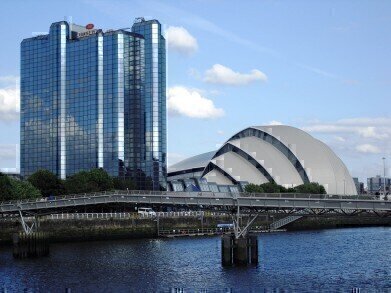Air Clean Up
3 Pollution Issues on the Agenda at COP26
Nov 01 2021
Yesterday, the curtain was lifted on the most significant Conference of the Parties to the UN Framework Convention on Climate Change (COP) since the Paris summit in 2015. In Glasgow, the heads of state and senior representatives from 197 nations around the world will gather to discuss how they can work together to reduce emissions, follow the lead of scientists and limit global warming to no more than 1.5°C compared to pre-Industrial Revolution levels.
At COP21 in Paris six years ago, the signatories to the Framework Convention made something of a breakthrough by agreeing to introduce targets intended to reduce their emissions and mitigate the impacts of climate change. Now, it falls to the attendees at this year’s event to build upon that promise by increasing their own national targets and coming to an agreement on concrete dates for phasing out more damaging forms of pollution. Here are three of the most important issues on the table.
Coal
Coal is widely regarded as the most damaging form of power generation in terms of the emissions associated with its combustion. While many countries have either done away with the fuel source entirely or have announced plans to do so, some others are ploughing ahead with it as a vital component of their energy profile.
For example, China is the most populous country in the world and relies on coal for over half (57%) of its total energy consumption. As recently as 2011, Chinese power plants were responsible for more emissions than all the passenger vehicles in the world combined, highlighting the scale of the issue. Although it has reduced its dependence on coal since then (when it comprised 70% of its energy makeup), convincing it to drop the fuel source altogether may be impossible. Other nations which are unlikely to turn their back on it include India and Australia.
Funding
Perhaps one of the saddest and most maddening aspects of the climate crisis is the injustice inherent in it. Small island nations in the Caribbean and the Pacific Ocean are those most likely to suffer its consequences, as are developing countries in Asia and Africa. However, they contributed very little to the problem in the first place.
Instead, it was the Western world’s widespread combustion of fossil fuels which both catapulted them to prosperity and precipitated the climate issues we now face. As such, it was agreed in Paris in 2015 that the developed world must raise at least $100 billion per year to support the developing world during their transition to cleaner sources of energy – but that has yet to happen. The best estimates suggest that $79 billion was sourced in 2019, so addressing that shortfall going forwards will be key to COP26’s success.
Global carbon market
Another potentially thorny issue is the idea of a global carbon market. This system would allow countries or companies to pay for projects aimed at reducing carbon emissions in other parts of the world, where the costs of doing so are cheaper. This would allow them to emit more carbon but offset those emissions with the reductions gained elsewhere.
However, this type of solution has been fraught with difficulties since its inception. One of the greatest concerns is that the emissions savings might be claimed by both the rich country funding the works and the poor country in which they are taking place, thus distorting the overall figures. As yet, no concrete framework or rulebook has been drawn up to ensure such an outcome does not come to pass, so it will fall to the delegates at COP26 to try and solve that conundrum once and for all.
Events
WEATHER • CLIMATE • WATER / EARTH OBSERVATIONS / GREEN ECONOMY
Oct 29 2024 St. Petersburg, Russia
Oct 30 2024 Hong Kong
Nov 05 2024 Toronto, Canada
Nov 06 2024 Ho Chi Minh City, Vietnam
Nov 12 2024 Valencia, Spain













